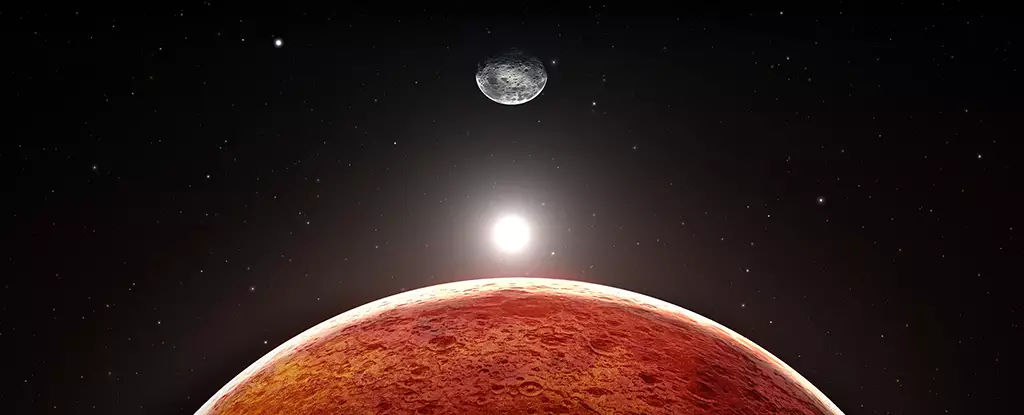The exploration of our Solar System has continuously presented scientists with enigmas that beckon for explanation. One of the most fascinating bodies in our celestial neighborhood is Mars, which presents an odd and strikingly triaxial shape. This peculiarity has led researchers to revisit long-held theories regarding the planet’s formation and surface conditions. An intriguing hypothesis, proposed by astronomer Michael Efroimsky from the US Naval Observatory, suggests that the irregular shape of Mars might be attributed to a long-lost moon named Nerio. This theory not only seeks to explain the geological features of Mars but also offers insights into its complex evolutionary history.
Mars, often referred to as the Red Planet, is unlike any other major celestial body in the Solar System; its shape resembles an ellipsoid that is significantly distorted along its three axes. This striking triaxial shape has generated considerable intrigue and speculation among planetary scientists. What could account for such a unique form? The hypothesis of a massive moon that once orbited Mars provides a compelling solution to this puzzling question. Efroimsky posits that Mars once had a moon, approximately a third the size of Earth’s moon, that played a critical role in shaping the planet during its formative years.
Such a moon, aptly named Nerio after a deity linked to Mars in ancient mythology, could have influenced the planet’s gravitational dynamics. The modeling suggests that the presence of this sizable moon would have led to an initial elongation of Mars while it was still in a plastic state, resulting in the distinct triaxial shape we observe today. This hypothesis aligns with the understanding that the young planet experienced significant geological activity, with magma oceans possibly being swayed under the moon’s gravitational influence.
The implications of the Nerio hypothesis extend beyond just the shape of Mars; it also addresses the striking geological features found on the planet’s surface. For instance, Mars is home to Tharis, the most prominent highland in the Solar System, as well as the colossal Valles Marineris canyon and Olympus Mons, the tallest volcano known. Efroimsky argues that these significant features could potentially be traced back to the gravitational interactions instigated by the hypothesized moon.
The presence of Nerio may have stimulated more intense volcanic and tectonic activity and influenced the distribution of features on the Martian surface. The gravitational pull that Nerio exerted would have contributed to a conducive environment for convection processes in the planet’s crust, leading to substantial geological uplift and shaping core formations. This confluence of activity could help explain the diverse terrain we observe on Mars today.
While the hypothesis of Nerio provides a fascinating lens through which to view the evolution of Mars, it also leaves many unanswered questions. Foremost among them is the lack of concrete evidence suggesting that such a moon ever existed. The Late Heavy Bombardment period, approximately 4 billion years ago, was marked by intense asteroid impacts which might have caused Nerio to collide with Mars or be ejected from its orbit. However, without tangible remnants or evidence of its presence, the narrative remains speculative.
As scientists continue to explore Mars through rovers and orbiters, they harvest invaluable data that could potentially illuminate the validity of these theories. Future studies may provide greater clarity on the existence or absence of Nerio and its potential geological influence. The enduring mystery of Mars’s shape and surface features reflects the broader questions surrounding planetary formation and evolution. Understanding Mars sheds light not just on our neighbor but also on the dynamic nature of celestial bodies throughout the universe.
The hypothesis of a lost moon, such as Nerio, adds a layer of intrigue to the narrative of Mars, inviting both excitement and skepticism. It raises fundamental questions about the planet’s history and trajectory in the Solar System. As the quest for knowledge continues, Mars remains a tantalizing focus for scientists and enthusiasts alike, offering endless opportunities for discovery and understanding of the intricate processes that shape planetary bodies. The story of Mars is far from finished, and as we delve deeper, new revelations may emerge, illuminating the past of our dusty red neighbor.


Leave a Reply